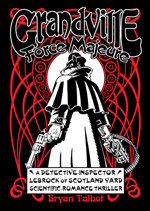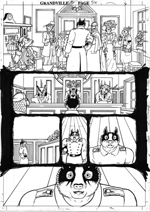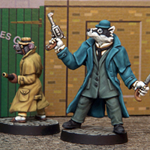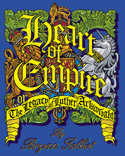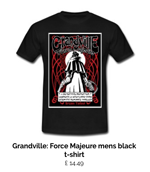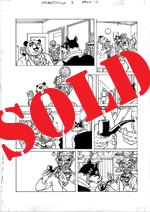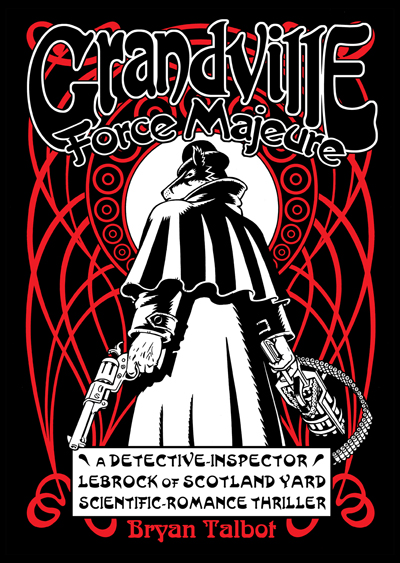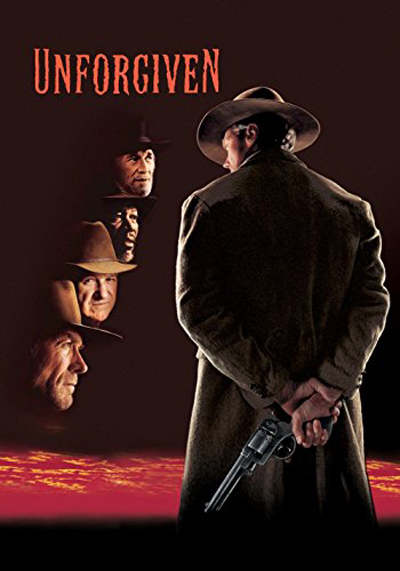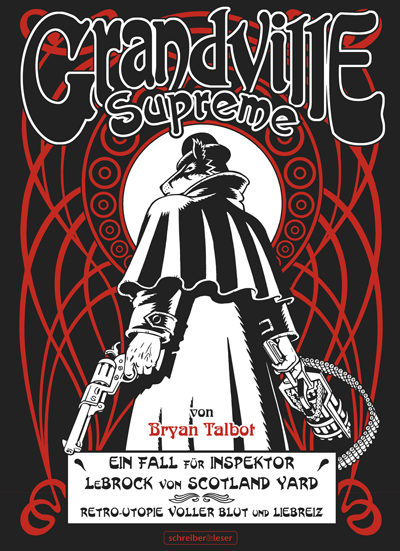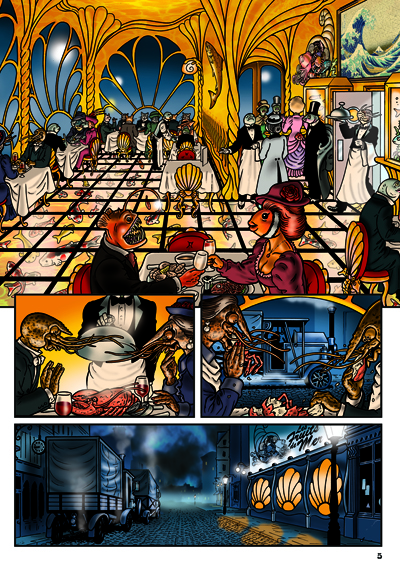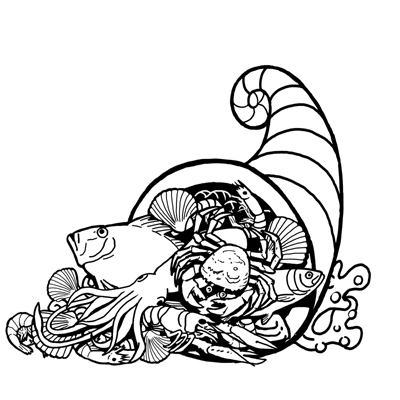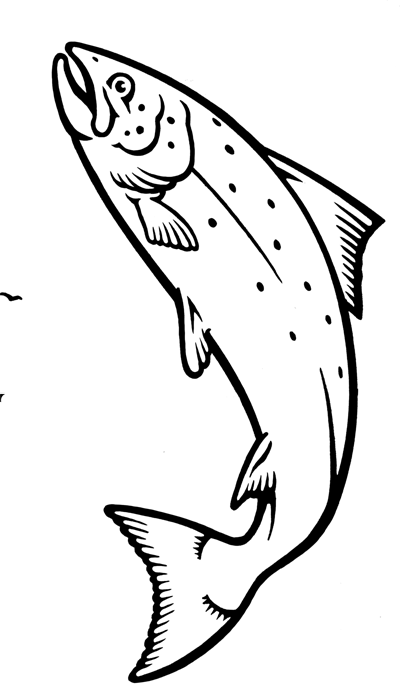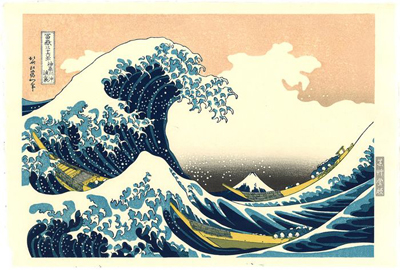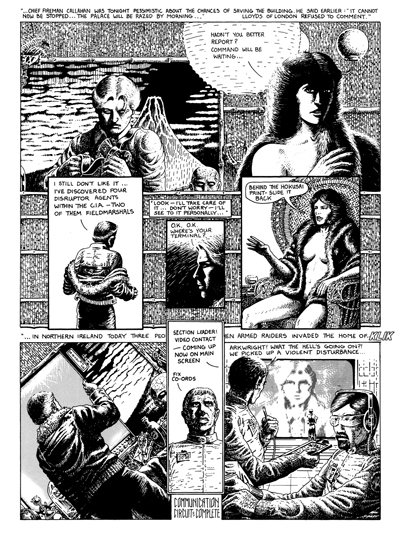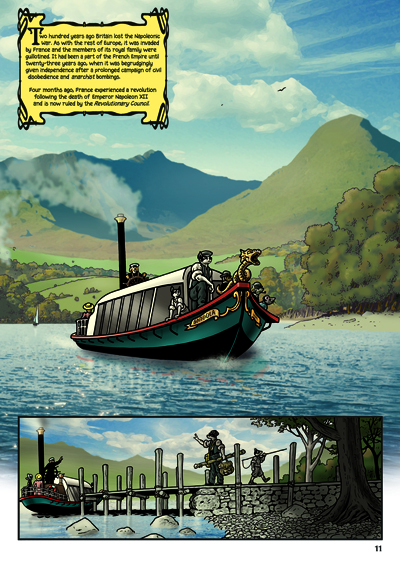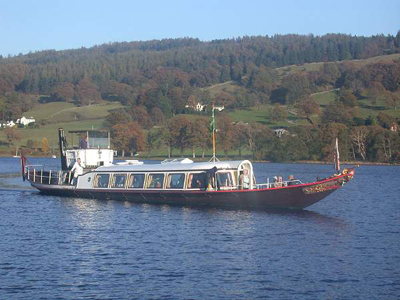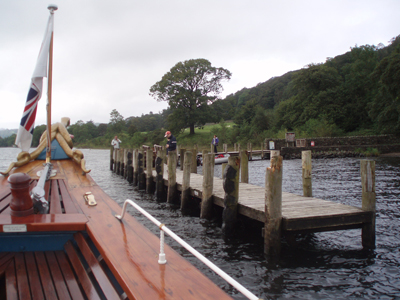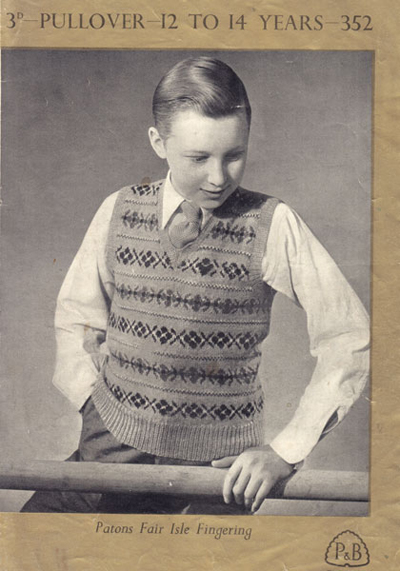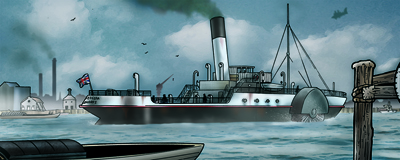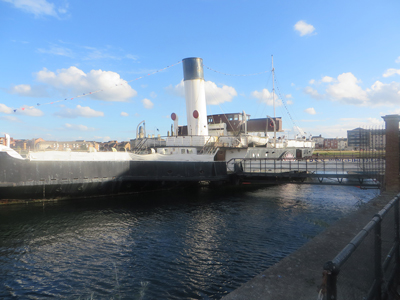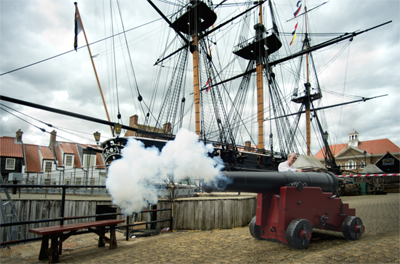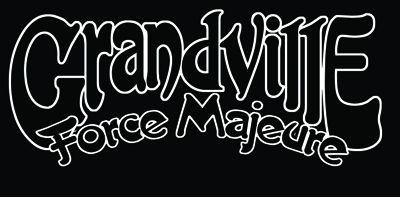
Grandville Force Majeure
annotations - batch 1
This is similar in concept to the Directors Cut of Heart of Empire that Bryan and myself created: it is an attempt to answer the eternal "where do you get your ideas from?" question, and a way to showcase the influences and images that went into the creation of Grandville.
We are publishing updates to this page every Sunday and we will cover the entire Grandville series: we have already completed the annotations for Grandville, Grandville Mon Amour, Grandville Bête Noire and Grandville Noël.
Start reading the Grandville Force Majeure annotations below, or jump straight to page 1, page 3, page 5, page 10, page 11, page 12, page 15, page 16, page 18, page 19 and page 20.
Page 1
The front cover image was loosely inspired by the poster for Unforgiven, one of my (many) favourite films.
As the legal term “Force Majeure” isn’t used in Germany, the German publishers renamed it Grandville Supreme.
After tackling other well-established genre themes in my continuing homage to detective fiction, such a serial killers, conspiracy theories and missing persons, in this final volume I deal with gang war, a murder frame-up and, within the “origin story” mise en abime, a whodunit.
Pages 3 to 8
Apart from the fact that the place is owned by an anthropomorphic crayfish, I’ve no idea where the notion of a seafood restaurant populated by seafood came from. A couple of times in the Grandville books, I ‘ve shown animals eating animals, pointing out an inherent dichotomy in the nature of anthropomorphic stories by taking things to their logical conclusion.
Page 5
Panel 1
I was quite pleased with the design of the art nouveau restaurant, especially the scallop shell-shaped windows. The glass floor with carp swimming beneath was based on a restaurant Mary and I ate in in Chongqing, China, which really did have a floor like this.
I designed the seafood cornucopia logo and the leaping salmon.
I imagine most people will recognise the framed tile picture to the top right as The Great Wave off Kanagawa by Hokusai (1760 1849), one of the most famous pieces of Japanese art in the world.
I've had a book of Hokusai prints since the early 70s and a picture of his of Mount Fuji appears in the very first chapter of The Adventures of Luther Arkwright (1978).
Panels 2 & 3
It was really difficult making anthropomorphic versions of a lobster face as, apart from the eyes, lobsters are about as far from a human face as you can get. I only managed it by cheating – I made a mouth by blacking in the space between a couple of their lower mandibles.
Page 10
“Keep clear of the badger: for he bites.”
This actually is a quotation from Sir Arthur Conan Doyle’s The Sign of the Four. It is said to Doctor Watson when he visits the menagerie owned by a Mr Sherman, sent by Holmes to collect the tracker dog Toby
Page 11
Panel 1
This scene is set at Coniston Water in the English Lake District. In the background is the mountain Coniston Old Man. The boat is based on the steam yacht Gondola, which really does ferry people around Coniston.
Panel 2
This jetty is based on ones in Coniston Water.
Page 12
In this scene, the young LeBrock is wearing a Fair Isle pullover, a style of clothing very popular in Britain from the 1920s – late 1950s
Panel 4
“Jimmy Riddle”: old-fashioned U.K. slang meaning “to urinate”. Originally late 19th century and probably still used now by a few people over 60, though I’ve not heard it for decades.
Page15
Panel 1
“The Alpha”: The Alpha Inn is indeed a pub in Bloomsbury, where LeBrock lives, but only in fiction. It’s the pub where the turkey containing the eponymous purloined jewel was bought in Arthur Conan Doyle’s short story, The Adventure of the Blue Carbuncle (1892).
Panel 4
“Ten-seventy-one”: 10-71 is London police radio code for “advise nature of fire/shooting”.
Page 16
Panel 1
This is based on an old photo of Old Compton Street in London’s Soho district (you can actually see more of it on page 9). For a while in the 1980s I did freelance illustration for DC Superheroes Monthly and the Superman and Batman annuals published by Egmont, who once had offices there.
“Mittrailleuse automatic cannon”: I made this up. Mitrailleuse is French for “machine gun”. The original one was invented in 1851, a predecessor of the Gatling gun,.
Panel 2
“The Soho nick”: “Nick”: U.K. slang for “police station”.
Page 17
Panel 4
What LeBrock says about parrot and Kingfisher feathers is correct.
“Miss Crustacea”: Crustacea are the sort of shell animals, such as lobsters, crabs and shrimps. She’s one, a langoustine. On page 66, we discover that her first name is Eustacia. Yes, she’s Eustacia Crustacea!
Page 18
Panel 1
Stanley Cray (see annotations about the Kray twins, Bête Noire, page 66) is a stereotypical East End gangster boss. I was hoping that some readers would hear the voice of Bob Hoskins character from The Long Good Friday (1980) in his dialogue.
As a side note, I had a pair of brothers names Stanley and Eugene Kray in Heart of Empire.
In case you didn’t know, 3 stars is the highest rating in The Michelin Guide to restaurants.
Panel 5
“Pilchard”: originally London gangster slang for, according to ex-criminal Neil “Razor” Smith: “Someone not too bright. Pilchards are such stupid fish that they will swim straight into nets in great numbers.”
Chaz (a cockney shortening of “Charles”) is drawn as a pilchard.
Page 19
Panel 1
“Les Temps”: Fr. The Times.
Panel 2
DCI “Thicko” Stoatson’s been an off-screen character in Grandville ever since the second volume. This is the first time we meet him.
Panel 4
“Are you ragging me?”: “ragging” originates from ritual humiliation and abuse sufferered by junior students in British public schools. For non-U.K. citizens, “public schools” are not public at all, they are extremely expensive private residential schools where the upper classes receive their education. Ragging is also generally used there (as Stoatson is using it here) to describe giving offense or making fun of.
Panel 5
Eton: Again, for the benefit of readers who aren’t British, Eton College is the most prestigious boys-only public school in the country, so is very expensive and the school of choice of the ruling class. 19 British prime ministers were educated there.
Page 20
Panel 1
This paddle-steamer is based on The Wingfield Castle (1934), now a permanent exhibit at the heritage museum in Hartlepool, which is about 20 minutes’ drive from our home in Sunderland, N.E. England. Below is one of the reference photos I took at the museum, Hartlepool’s Maritime Experience, which also houses the HMS Trincomalee, a 3-masted frigate launched in 1817.
In 2013, I was invited to a steampunk convention there where, wearing my big shirt, I opened the event by firing a cannon.
Now see the second batch of Grandville Force Majeure annotations.

